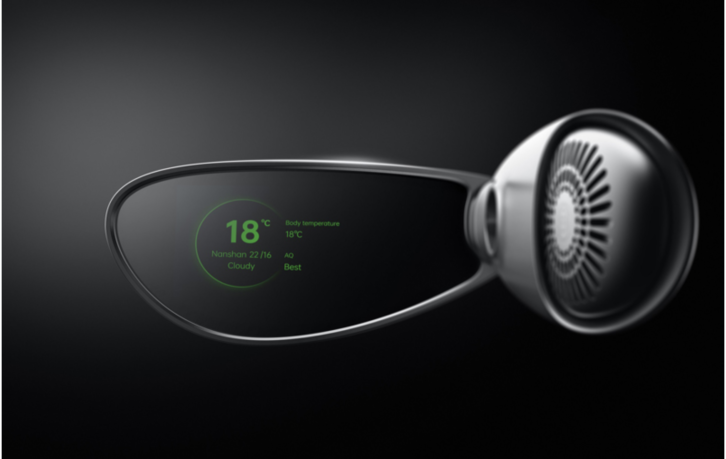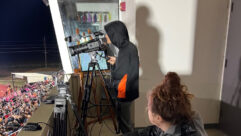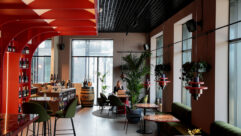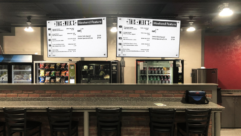In December Chinese company OPPO introduced the OPPO Air Glass. Now it’s in the hands of reviewers.
The AR (Assisted Reality) device – which is equipped with OPPO self-developed Spark Micro Projector, Micro LED, and a bespoke diffraction optical waveguide display – supports four different user interactions through touch, voice, head movement, and hand motion. It’s unique monocle-like form factor sets it apart design-wise in the competition to make AR glasses palatable as wearables.
In the obligatory press quote at the time, Levin Liu, OPPO Vice President and Head of OPPO Research Institute said, “OPPO has been exploring the possibilities of Extended Reality (XR) for a long time, and with Air Glass, we have finally created a smart glass product that is truly within the reach of consumers. As its futuristic design suggests, OPPO Air Glass is set to revolutionize the way we view and consume information. The easy-to-use display can present key messages we need right in front of our eyes. With OPPO Air Glass, the world will never look the same again.”

OPPO Air Glass is built around a monocle waveguide design. With a total weight of approximately 30g, OPPO Air Glass can be worn much like a pair of regular glasses. The design was supposedly inspired by cicadas and feathers; the lens and touchbar house all of the components, including the Qualcomm Snapdragon Wear 4100 Platform.
Oppo describes the “self-developed Spark Micro Projector as incorporating Micro LED and five high-transparency glass lenses.
From the press release:
At the heart of the OPPO Air Glass display system is OPPO’s self-developed Spark Micro Projector – one of the most compact projection systems in the industry is of merely 0.5cc, or roughly the size of a coffee bean. The projector features a CNC metal enclosure with a glass lens module to provide better heat dissipation and stability. The projector is powered by a cutting-edge Micro LED, which has a brightness of up to 3 million nits.
OPPO Air Glass adopts a bespoke optical diffraction waveguide, supporting two display modes – 16-level grayscale and 256-level grayscale – and can deliver up to 1400 nits in average brightness, ensuring a vivid and sharp visual display in different lighting conditions. Additionally, two layers of sapphire glass are used to encase the waveguide on both sides, providing protection with improved transparency.
OPPO Air Glass is designed to be as accessible to as many people as possible, including users with refractive errors such as myopia and hypermetropia. The glasses are available in two different types of frames – a silver half-frame, and a black full-frame that can better accommodate users who require corrective eyewear. Both colors are available in two sizes.
OPPO Air Glass can be operated using the Smart Glass App on OPPO Watch 2 and any OPPO smartphone installed with ColorOS 11 or above versions. It also supports four intuitive methods of interaction – touch, voice, hand motions, and head movements.
When Air Glass is paired with an OPPO Watch 2, users can also use hand movements to confirm, cancel, and switch application cards. Moreover, for a whole new way of interaction, head movements can be recognized by Air Glass, for example gently nodding or shaking the head can open and close notifications respectively.
Adi Robertson at The Verge describes it as an “earbud for your eyes” in this exhaustive first look.

OPPO’S AIR GLASS IS AN AR EXPERIMENT WITH ONE GREAT IDEA
While many AR experiments focus on pushing pure technical capability, the Air Glass accepts some clear hardware limits to play with an interesting form factor. After getting a set of the glasses and a compatible phone to try out, I’ve found a design idea so obvious I’m surprised I haven’t seen it more often, executed with a roughness that makes clear how much work is left. MORE@TheVerge










